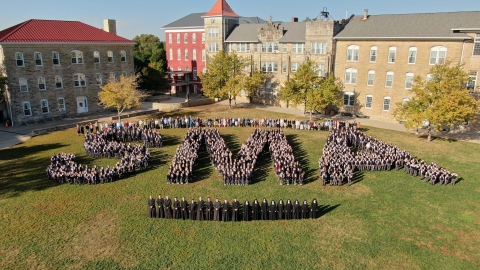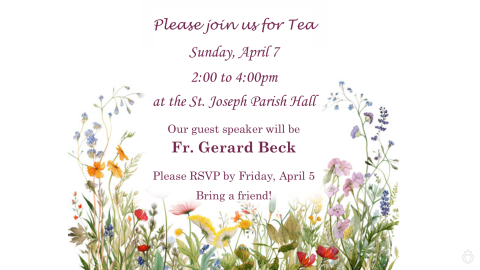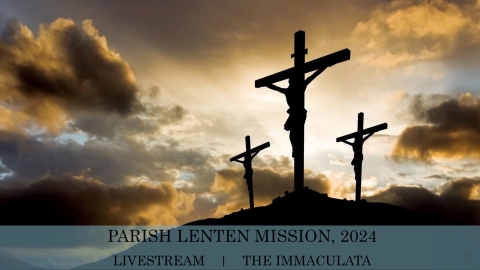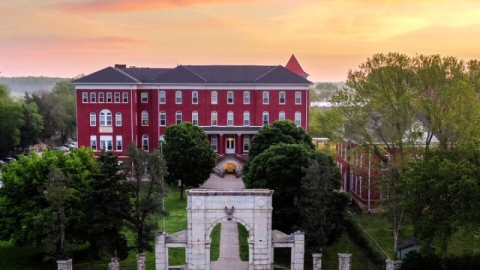Pope’s Apostolic Visit to Armenia

A report on the Pope’s Apostolic visit to Armenia, June 24-26
The purpose of this journey, Vatican Radio announced on June 24, is to deepen the fraternal ties between the Roman Catholic Church and the Armenian Apostolic Church. The Armenian Church, strictly speaking, is not part of the Orthodox Communion but is affiliated with the Oriental Churches said to be “of the three Councils,” which have been separated from the rest of the Christian world for more than 1,500 years.
(Editor’s note: The pre-Chalcedonian Churches “of the three Councils” recognize only the First Council of Nicea in 325, the First Council of Constantinople in 381 and the Council of Ephesus in 431, which were held before the division between Rome and Constantinople that followed the Council of Chalcedon in 451).
Today Catholics are only a small minority of the Armenian population and have good relations with the Armenian Apostolic Church, which makes up more than 90% of the population and is a leaven of national unity. The visit was characterized by Vatican Radio as “a journey with strong ecumenical overtones.”
On Friday, June 24, Pope Francis first traveled to the Apostolic Cathedral in Etchmiadzin, near Erevan, where he was welcomed by the Catholicos Karekin II, Patriarch of the Armenian Apostolic Church. He wished to “thank the Lord for the light of faith kindled on this land, the faith that has conferred on Armenia its particular identity,” since 301 A.D. The Supreme Pontiff also praised “the ecumenical spirit” and, as usual, invited his listeners to “reconcile differences by dialogue and appreciating what unites us.”
As he was being received at the presidential palace in Erevan, Pope Francis once again described the extermination of the Armenians a century ago as “genocide,” “a word that is intolerable for the Turkish authorities and provokes vehement reactions,” Vaticanist Sandro Magister emphasized. He further explained that “the word did not appear in the papal speeches prepared in several languages for his trip to Armenia.” Similarly, the Pope added a sentence that does not appear either in the written text:
It is truly sad that—in this case as in the others [the genocides of the last century under Hitler and Stalin]—the great powers looked aside.”
Later, as he returned from Armenia, the Pope explained to the journalists accompanying him that:
[i]n Argentina, when you spoke about the Armenian extermination, they always used the word ‘genocide.’ I didn’t know another.... When I arrived in Rome, I heard another expression: ‘The Great Evil’ or the ‘terrible tragedy’.... I saw that St John Paul II had used the word, that he used both expressions: Great Evil and genocide. And I cited that one in quotation marks.”
[Editor’s note: On Sunday, April 12, 2015, in Saint Peter’s Basilica in Rome, during the Mass said at the invitation of the Armenian Catholic Church for the centennial of the genocide (1915-1917):
that [event] is generally considered as the first genocide of the twentieth century” (citing John Paul II and Karekin II, Joint Declaration, Etchmiadzin, September 27, 2001).]
It wasn’t received well. A statement was made by the Turkish government. A few days later Turkey recalled its ambassador to Ankara.... The right to protest, we all have it. In this speech [that I gave in Armenia] the word did not appear originally, that is true. But after having heard the tone of the president’s speech and also with my [Argentine] past with this word, and having said this word last year in St. Peter’s publicly, it would have sounded strange not to say the same thing at least.”
On Saturday, June 25, the Holy Father’s visit to the memorial in Tsitsernakaberd for the victims of the Armenian genocide took place, accompanied by President Serge Sargsian and Patriarch Karekin II. Then the Pope traveled to the city of Gyumri, the second-largest Armenian city, located in the Northwest of the country, about ten kilometers [6 miles] from Turkey, where he celebrated Mass on Vartanants Square. Francis invited Catholics to build their lives on “the memory of the people,” on faith, and merciful love. Without mentioning the 1915 “genocide” or the seventy years of the Communist regime, Pope Francis recalled “the terrible adversities” experienced by the Armenian people.
That evening, upon returning to Erevan, the Supreme Pontiff presided with Karekin II at an ecumenical prayer meeting for peace on the Central Square of the Republic. In the presence of more than 40,000 people, the Pope recalled the “horrible suffering” endured by the Armenian people, but also their “firm faith” and “history rich in magnificent testimonies to the Gospel.” Referring to “the Great Evil,” “that terrible, mad extermination” without naming the 1915 genocide, Francis explained that recalling it “is not only timely; it is a duty” so that “the world may never again fall into the spiral of similar horrors!” By praying and by loving one another, the Pope declared,
humbly and with an open mind, let us prepare ourselves to receive the divine gift of unity. Let us continue our journey with determination, and let us even run toward full communion between us.”
On June 26, Pope Francis celebrated Sunday Mass privately in a chapel of the Apostolic Palace in Etchmiadzin, where he resided during his stay in Armenia. Then he attended an outdoor Divine Liturgy according to the Armenian Rite of Saint Gregory the Illuminator, with the Catholicos Karekin II presiding. At the conclusion of the ceremony, which lasted more than two hours and was attended by several thousand of the faithful, Pope Francis spoke briefly to express once more his hope for full communion between the two Churches:
May the Armenian Church walk in peace and may the communion between us be complete. May an ardent desire for unity rise up in our hearts, a unity that must not be ‘the submission of one to the other, or assimilation, but rather the acceptance of all the gifts that God has given to each. This will reveal to the entire world the great mystery of salvation accomplished by Christ the Lord through the Holy Spirit’” (Greeting at the Divine Liturgy, Patriarchal Church of Saint George, Istanbul, 30 November 2014).
Then, addressing the Patriarch, the Pope concluded: “Your Holiness, in the name of God, I ask you to bless me, to bless me and the Catholic Church, and to bless this our path towards full unity.” He then exchanged a kiss of peace with Karekin II.
On the last day of the Pope’s visit in Armenia, Francis and Karekin II signed a joint statement in which they castigated religious fundamentalism.
We implore the leaders of nations,” the Pope and the Catholicos wrote, “to listen to the plea of millions of human beings who long for peace and justice in the world, who demand respect for their God-given rights, who have urgent need of bread, not guns.”
The two signers also asked their respective faithful “to open their hearts and hands to the victims of war and terrorism, to refugees and their families.” They also insisted that political leaders and the international community should do “much more to ensure the right of all to live in peace and security..., to protect religious and ethnic minorities [and] to combat human trafficking.”
Comments: This humanitarian joint declaration, after the ecumenical statements of the Pope asking Patriarch Karekin II for his blessing—for him and for the whole Catholic Church!—prompts us to reread the Encyclical Mortalium animos (1928) by Pius XI:
For the union of Christians can only be promoted by promoting the return to the one true Church of Christ of those who are separated from it, for in the past they have unhappily left it.... Alas their children left the home of their fathers, but it did not fall to the ground and perish for ever, for it was supported by God. Let them therefore return to their common Father, who, forgetting the insults previously heaped on the Apostolic See, will receive them in the most loving fashion. For if, as they continually state, they long to be united with Us and ours, why do they not hasten to enter the Church, ‘the Mother and mistress of all Christ's faithful’? (Lateran Council IV, can. 5)... Let, therefore, the separated children draw nigh..., not with the intention and the hope that ‘the Church of the living God, the pillar and ground of the truth’ (1 Tim 2:15) will cast aside the integrity of the faith and tolerate their errors, but, on the contrary, that they themselves submit to its teaching and government.”
Sources: DICI no. 338 - July 1, 2016





